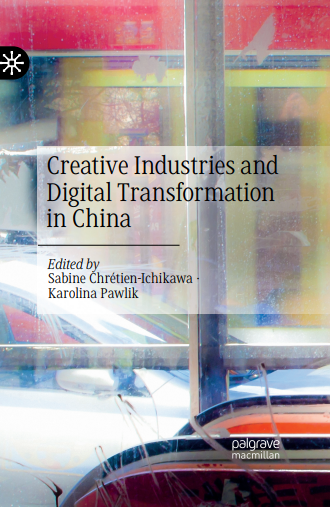By
“Creative Industries and Digital Transformation in China” is an insiders’ view written by European researchers based in Shanghai city, witnessing the impact of digitalization on five sectors: calligraphy, design, fashion, gaming, the media industries and the visual arts. Living and working in China enabled us to be at the forefront of social and cultural changes of the last decade and to sense future trends in the making.
China is currently gaining cultural confidence as a result of its economic influence. We explore the local dynamics, tensions, and transformations towards the advent of a stronger cultural development. The official discourse and policies promoting local cultural revival are fairly recent and unevenly implemented throughout the country. Related digitalization is accelerating but its consequences on society may not be fully anticipated. Geographical, linguistic, and cultural distance between China and the West have created barriers and misinterpretations, often the subject of mainstream media worldwide. Furthermore, the issues faced by stakeholders are not well researched, or out of reach for social science researchers of foreign origin. Despite these difficulties and the news coverage that often forge distorted images of China abroad, we aimed at discovering some transformations that bear potential global impact. Through the lens of calligraphy, design, fashion, gaming, the media industries, and the visual arts, we uncover innovative dynamics in the making, as well as evolving cultural narratives about Chinese identities.
The introduction and the first chapter are written by Karolina Pawlik, an anthropologist with a deep knowledge of China, who holds a PhD in Cultural Studies. She examines Chinese visual culture. Teaching in state universities she contributes to the awareness of the next generation of creative strategists, instilling different cultural views of China and the world. Her chapter reveals the profound impact of digitalization on traditional calligraphy. Alexandre Ouairy has lived in China for more than twenty years. He is a doctoral researcher in art history, and he investigates Chinese contemporary art practices and the interplay between artists, institutions, the market economy and censorship, specifically in the city of Shanghai. Also, an artist and director of a creative agency, he is an actor of the Chinese CCIs. Thomas Amadieu is a sociologist who examines youth work attitudes, representations of sustainability and market dynamics in gaming. Author of various books related to gaming and addictions, he reveals the moral dimensions of the growing gambling industry. Gabriele Goretti is an architect, designer and researcher in product and fashion design. His research work focuses design strategies, manufacturing processes and innovation. In his chapter he explores the reflective emotions of netizens within China’s digital ecosystem, taking fashion media as an example to compare China with the West. Sabine Chrétien-Ichikawa’s research is interdisciplinary, at the crossroads of design, marketing, and business history. Her chapter highlights the phygital transformation of Shanghai fashion among the post 1990s generation. Her concluding chapter opens questions for the future of Chinese CCIs with global appeal.
We are five authors originally from Poland, France, and Italy from different disciplines. We used theoretical frameworks from art history, design, sociology, and economics elaborated in the West. AsChina is developing its own creative industries Chinese scholars increasingly highlight a need to reinterpret models on the base of to their cultural roots and civilization. For instance, Throsby model and categorization of industries is to be carefully examined according to context and needs to be adapted by experts. Although this is beyond our scope, we are aware of the cultural gap, and we hope to contribute to bridge different worldviews.
Finally, being based in Shanghai for almost ten years, I feel lucky today to have been able to witness an era of cultural opening, international exchange, and a vivid art scene. Since the covid though the foreign community has shrunk drastically, and as of today it is impossible to travel to China freely. I feel that this book is a testimony of a period that may not come again soon. I also feel that it is important to keep strong communication with Chinese people, at home or abroad, to continue following the transformation of Chinese CCIs, as they are directly related to China’s soft power. I hope to have the opportunity to exchange with this community of cultural economists, and to share my current research about the dilemma faced by Chinese elite universities teaching creativity to the future leaders of CCIs, in a future post.
About this book
Chrétien-Ichikawa, S., & Pawlik, K. (Eds.). (2022). Creative Industries and Digital Transformation in China. Springer Nature.
About the author
is a French researcher, director of masters’ programs in Luxury Marketing in ESSCA School of Management in Paris & Shanghai.

Leave a Reply